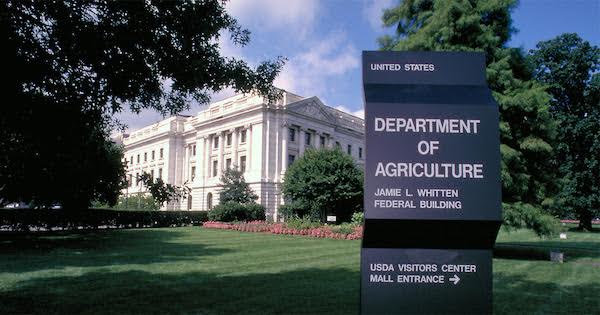Today marks the 161st anniversary of the United States Department of Agriculture, which President Abraham Lincoln called “The People’s Department.” Lincoln signed the bill to establish the independent agency on May 15, 1862, with a stated mission to “acquire and to diffuse among the people of the United States useful information on subjects connected to agriculture.”
Lincoln was born on a poor farm in Kentucky in the midst of pioneer farming on the western frontier of America. His work as a farmhand gave him the understanding and experience of what it meant to cultivate the land and produce successful harvests. Once he left his farming life to pursue politics, Lincoln expressed his passion for developing better education and government recognition of agriculture and engineering.
At the time, the United States was still very much an agrarian society with nearly half the country’s population living on farms. Since the country’s earliest days, officials in the federal government sought out new seeds, plants, and animals that could be imported and adopted by U.S. farmers. But it was a man named Henry Leavitt Ellsworth that most credit with paving the way for an official agency dedicated to agriculture.
Ellsworth, who would become known as the “Father of the Department of Agriculture,” was an interesting guy. Born in Connecticut in 1791, he was the son of U.S. Founding Father and Chief Justice Oliver Ellsworth and Abigail Wolcott. Freshly out of Yale at age 19, he took the first of several trips out West where he got a fast education on the rigors of America’s still untamed lands. Twenty-two years later in 1832, he was tapped to be a U.S. Commissioner of Indian Tribes. Again, this kept him in the wilds of the West, but also passing through many of the new towns and communities that were cropping up.
Ellsworth spent one whole month as mayor of Hartford, Connecticut, when he was asked to run the newly established U.S. Patent Office in 1835. In his new post, Leavitt began collecting and distributing new varieties of seeds and plants through members of Congress and local agricultural societies. In 1839, largely thanks to Leavitt’s urging, Congress established the Agricultural Division within the Patent Office and allotted $1,000 for “the collection of agricultural statistics and other agricultural purposes. By 1845 Ellsworth’s patent office was performing the functions of a full-fledged agricultural bureau.
When Congress finally established the independent Department of Agriculture in 1862, Lincoln appointed agriculturalist Isaac Newton to run it. Newton was a farmer and entrepreneur that came to know Lincoln because he sold farm products directly to the White House. Among other things, he was responsible for inaugurating the USDA’s statistical services to collect and analyze agricultural data. He also arranged for the USDA to issue monthly and annual agricultural reports. Newton also championed a nationwide system of daily weather reports for farmers, which eventually led to the establishment of the U.S. Weather Service under USDA. He even set up an experimental farm on what is now the National Mall quite near the Capitol—, right where the USDA headquarters stand today.
As the USDA shared its discoveries with the American public, the landscape began to change. Government support of science, technology, and education to improve agriculture gave American farmers an edge over the rest of the world. Research into new varieties of foodstuffs (such as navel oranges for California and sugar beets for the Midwest), the introduction of early organic insecticides, and fertilizer testing programs were a few of the early USDA projects undertaken to improve agriculture and life in America.
Today, the USDA is vital in helping to keep America’s farmers and ranchers in business and making sure that the nation’s commercial supply of meat, poultry, and egg products is safe, wholesome and properly labeled. It also helps to support and ensure the health and care of animals and plants and the health of the land through sustainable management. In addition, the USDA works to improve the economy and quality of life in all of rural America. (Sources: Seeds of Change, USDA, Wikipedia)







